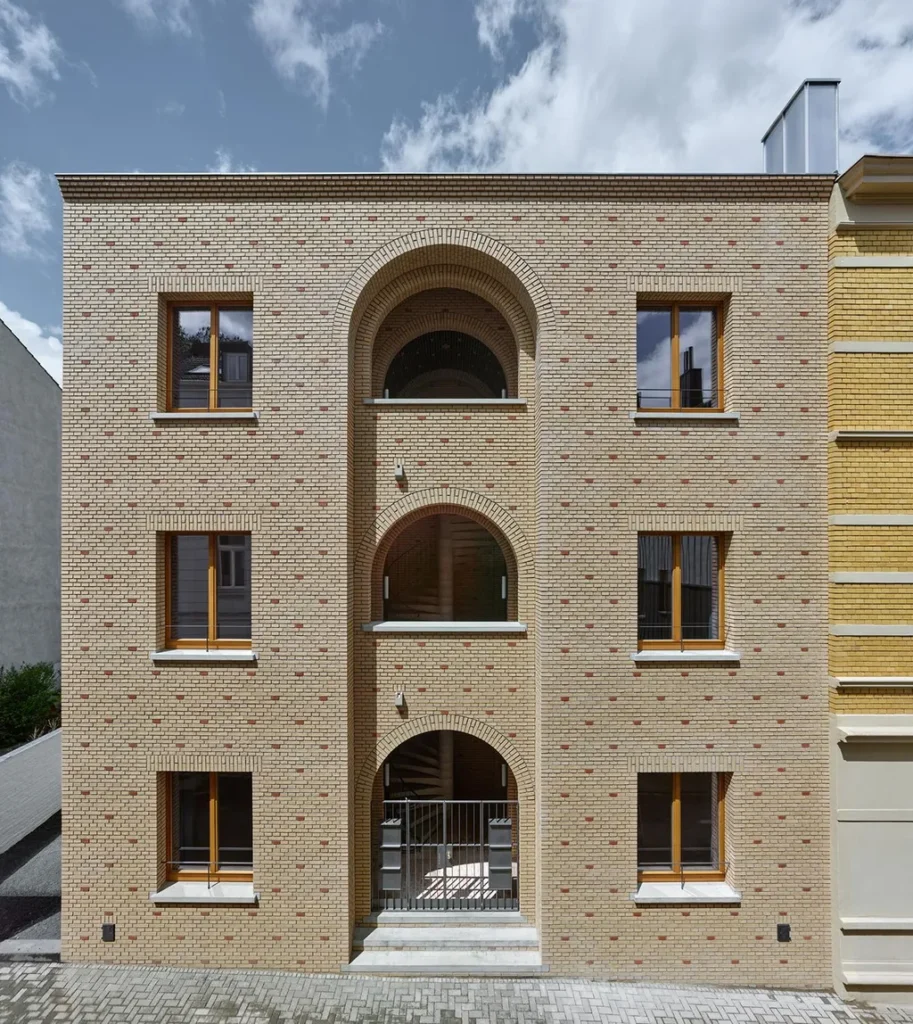In the heart of Bonn’s Poppelsdorf district, architect and university professor Uwe Schröder has crafted a residential marvel that defies conventional spatial constraints. The Haus am Burggarten, a six-unit student housing project, stands as a testament to Schröder’s architectural prowess, demonstrating that even the most compact spaces can be transformed into captivating, beautiful environments.
The project, detailed in the Journal of Traditional Building, Architecture and Urbanism (translated as ‘Journal of Traditional Building, Craftsmanship and Urban Development’), is a study in spatial sequence and symbolism, with an open staircase serving as its centerpiece. Schröder’s design philosophy is evident in the way he has utilized the site’s limited depth, creating two compact flats per floor, each with a single large room. Despite the confined space, the architect has managed to create a sense of openness and fluidity, making the small dimensions barely noticeable.
“The challenge was to create a sense of spaciousness within a confined footprint,” Schröder explains. “I wanted to demonstrate that architecture is not just about the size of the space, but about how you experience it.”
The Haus am Burggarten’s open staircase is a striking feature, serving as both a functional element and a symbolic centerpiece. It invites residents to interact, fostering a sense of community within the small building. The staircase’s design is complemented by the use of polychromy, with a variety of colors and materials used to create visual interest and depth.
The commercial implications of Schröder’s work are significant, particularly for the energy sector. The efficient use of space in the Haus am Burggarten translates to reduced energy consumption, a critical factor in today’s environmentally conscious world. As urban areas continue to grow and space becomes increasingly scarce, the principles demonstrated in this project could inform future residential developments, offering a sustainable, energy-efficient solution to the challenge of urban density.
Moreover, the project’s focus on community and interaction could have broader implications for urban planning and design. As cities grapple with issues of social isolation and disconnection, the Haus am Burggarten offers a model for creating spaces that foster community and encourage interaction.
In the end, the Haus am Burggarten is more than just a residential building. It is a testament to the power of thoughtful, innovative design, a beacon of what can be achieved when architects dare to challenge conventional norms. As the world continues to grapple with the challenges of urbanization and sustainability, Schröder’s work serves as a reminder that even the smallest spaces can be transformed into something truly extraordinary.

